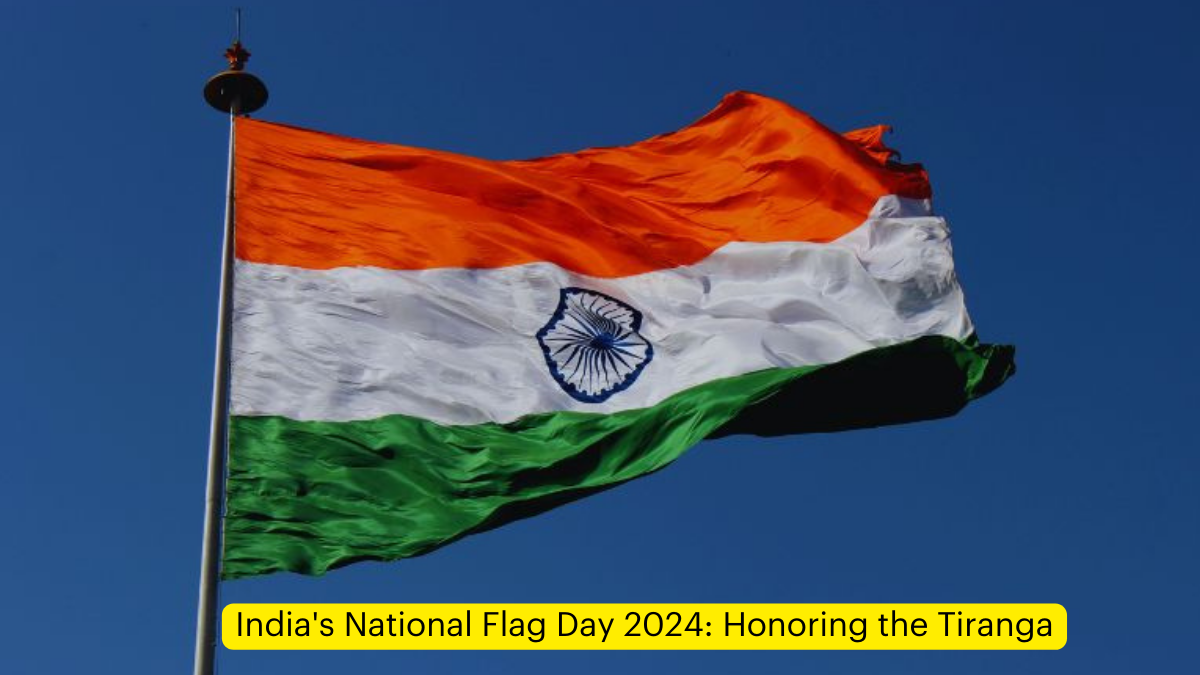India’s National Flag Day commemorates the adoption of the Indian national flag on July 22, 1947, by the Constituent Assembly, just days before the country attained Independence from British rule on August 15, 1947. This day holds great significance as it honors the symbol of India’s unity, integrity, and sovereignty, according to the government website Know India.
Design and Symbolism of the Flag
The Indian national flag, known as the “Tiranga“, features three horizontal stripes of equal width. The top stripe is saffron (kesaria), representing courage and sacrifice. The middle stripe is white, symbolizing peace and truth, with a navy blue Ashoka Chakra (wheel) at its centre, signifying the eternal wheel of law. The bottom stripe is green, denoting growth and auspiciousness.
The flag’s proportions are in the ratio of 2:3, and the Ashoka Chakra has 24 spokes, representing continuous progress. This design carries deep symbolism, reflecting the values and aspirations of the Indian nation.
Historical Context
The flag’s design was adopted just weeks before India’s Independence, chosen to replace an earlier version. A significant change was the replacement of the spinning wheel, or “Charkha,” with the Ashoka Chakra. The Charkha had been a powerful symbol of self-reliance and resistance during the freedom struggle. This change was suggested by Badr-ud-Din Tyabji and endorsed by Mahatma Gandhi, marking a transition from the symbols of struggle to those of governance and progress.
The Flag Code of India
In 2002, the Flag Code of India was modified to allow citizens to display and use the national flag on any day, not just National days as was previously mandated. This change aimed to foster a deeper connection between citizens and their national symbol. However, the code emphasizes that the flag must always be treated with respect and dignity.
Citizens are now permitted to fly the flag throughout the year, provided they adhere to specific guidelines. These include hoisting the flag between sunrise and sunset unless it is adequately illuminated at night. This modification has allowed for more frequent and widespread displays of national pride.
Significance and Observance
National Flag Day is not merely a day to honor the flag; it serves as an opportunity for reflection on the values and sacrifices associated with India’s freedom struggle. Schools, government institutions, and various organizations often hold ceremonies to pay tribute to this national symbol and educate citizens about its importance.
These observances typically include flag-hoisting ceremonies, patriotic songs, and educational programs about the flag’s history and significance. Such events help to instill a sense of national pride and unity among citizens of all ages.
The day also serves as a reminder of the collective identity of Indians and the ideals that the flag embodies. It represents the country’s rich heritage, diverse culture, and ongoing journey towards progress and unity. By honoring the Tiranga, Indians reaffirm their commitment to the principles of democracy, secularism, and social justice that form the foundation of their nation.
In conclusion, India’s National Flag Day is a powerful reminder of the country’s hard-won independence and the values it continues to uphold. It encourages citizens to reflect on their national identity, fostering a sense of pride and unity that transcends regional, linguistic, and cultural differences. As the Tiranga flutters in the sky, it continues to inspire millions of Indians to work towards a brighter, more prosperous future for their nation.




 Union Minister Annpurna Devi Inaugurates...
Union Minister Annpurna Devi Inaugurates...
 New Delhi World Book Fair 2026: Free Ent...
New Delhi World Book Fair 2026: Free Ent...
 Amit Shah Inaugurates National IED Data ...
Amit Shah Inaugurates National IED Data ...







